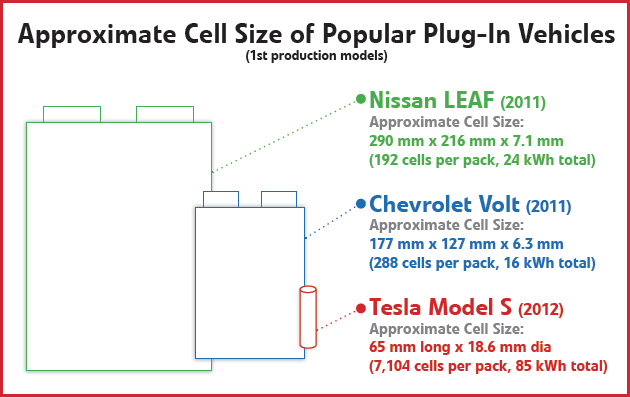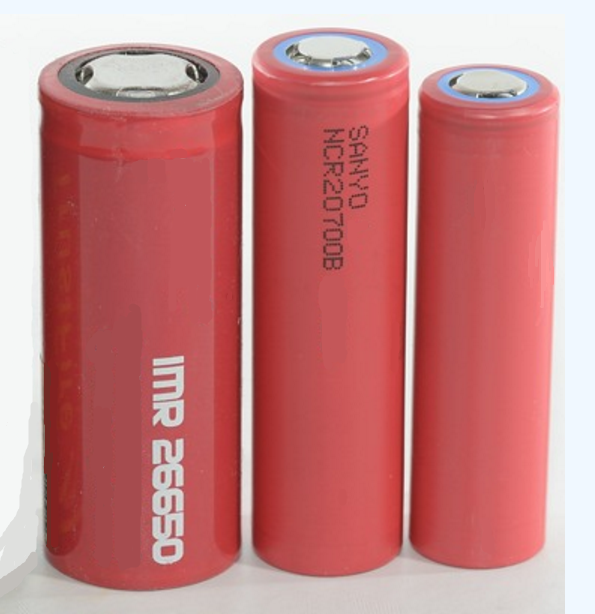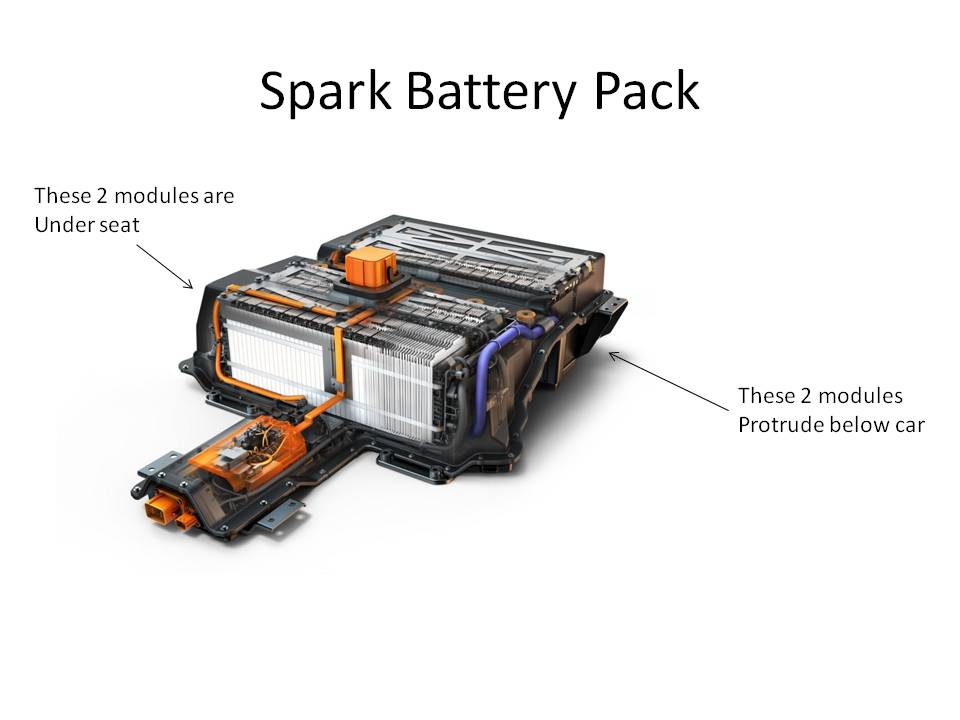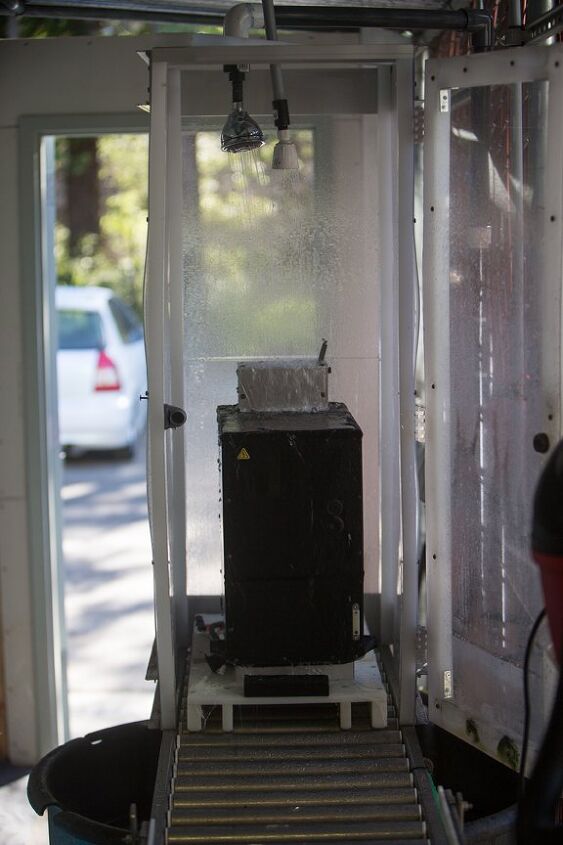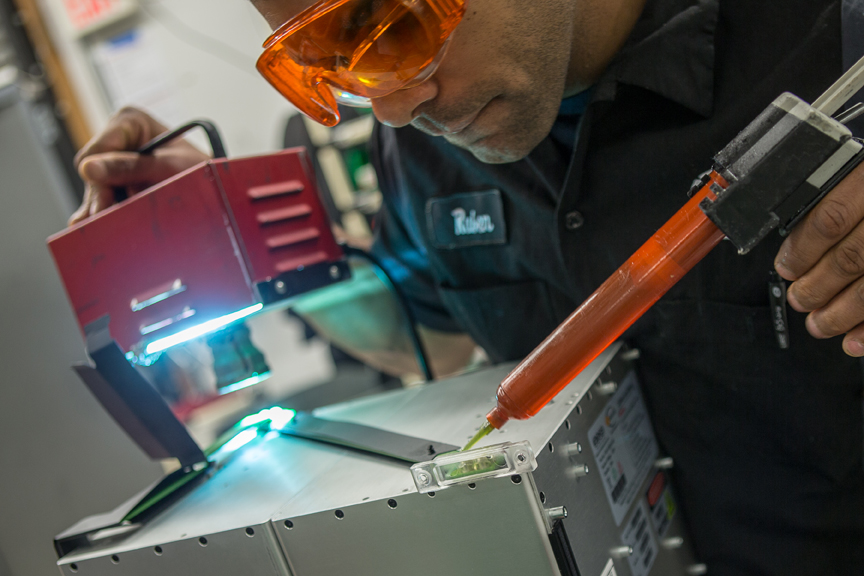All useful info regarding the
ZERO BATTERY
Credit to the Unnofficial ZERO manual page:
http://zeromanual.com/index.php/Unofficial_Service_Manual#Battery
Cells
The current manufacturer is Farasis who are supplying pouch cells for the 2013+ model range.
NMC Cell ChemistryThe chemistry used is Lithium Nickel Manganese Cobalt: LiNiMnCoO2 ("NMC" or other rearrangements of those letters).NMC is a relatively new battery chemistry which differs from the Li-cobalt chemistry we are familiar with from mobile phone batteries and laptops. While Li-cobalt has a higher energy density than NMC (storage capacity per kilogram), it doesn't cycle as well and ages quicker.That's fine for a mobile phone that is likely to be obsolete after 2-3 years, but not for an electric bike.The automotive-grade NMC cells that Farasis supply should easily satisfy the requirements of the five year warranty that Zero are providing with their current Z-Force battery packs. It seems they should last 8-10 years if they aren't abused.Even if you start to notice some significant deterioration after five years, the rate at which battery technology is progressing means that you should be able to buy a new battery pack with much better capacity (range) than the original for less money.
Battery Capacity
Normally, the true energy a battery can have is calculated by taking nominal voltage times the Ah capacity of the battery = Wh (divide by 1000 for kWh units).
However for some reasons, based on industry convention, Zero calculates battery energy (the kWh) by taking the maximum voltage the battery has at 100% capacity times the capacity in Ah, instead of nominal voltage.
Maximum voltage is only present at the beginning of discharge when it is full, and then it drops (nonlinearly).
The nominal voltage is like the average voltage the battery over the entire discharge range. The average is the voltage measured at the battery terminal when it has 50% charge state and is disconnected from any load.
For example, the 2013 S has 100Ah and a nominal 102V: the total energy the battery has is 100Ah x 102V = 10200Wh (10.2kWh). But if you use maximum battery voltage you get 100Ah x 116V = 11.6kWh.
This also applies when adding a power tank, confusing customers about the official rating versus what the mobile application reports.
Regardless of this complexity of measurement, Zero's range figures appear reliable in the general context of the test conditions.
Cells
The current manufacturer is Farasis who are supplying pouch cells for the 2013+ model range.
NMC Cell ChemistryThe chemistry used is Lithium Nickel Manganese Cobalt: LiNiMnCoO2 ("NMC" or other rearrangements of those letters).NMC is a relatively new battery chemistry which differs from the Li-cobalt chemistry we are familiar with from mobile phone batteries and laptops. While Li-cobalt has a higher energy density than NMC (storage capacity per kilogram), it doesn't cycle as well and ages quicker.That's fine for a mobile phone that is likely to be obsolete after 2-3 years, but not for an electric bike.The automotive-grade NMC cells that Farasis supply should easily satisfy the requirements of the five year warranty that Zero are providing with their current Z-Force battery packs. It seems they should last 8-10 years if they aren't abused.Even if you start to notice some significant deterioration after five years, the rate at which battery technology is progressing means that you should be able to buy a new battery pack with much better capacity (range) than the original for less money.
2009-2011 cylindrical Molicel IMR-26700A Molicel 26700 2.9Ah 2.5V 3.8V 4.2V±50mV 26.4mm ⌀ ⨉ 70mm
2012 pouch EIG EIG C020 EIG NCM C020 20Ah 2.5V 3.65V 4.15V 130mm ⨉ 217mm ⨉ 7.2mm
2013-2014 Farasis Farasis 25Ah Farasis IMP06160230P25A 25Ah 25Ah 2.0V 3.65V 4.15-4.20V 161mm ⨉ 230mm ⨉ 6mm
2015 Farasis 27Ah 27Ah (25Ah label) 161mm ⨉ 230mm ⨉ 6mm
2016-2017 Farasis 29Ah 29Ah (28Ah label) 160mm ⨉ 230mm ⨉ 6mm
Farasis ClaimsPer Farasis engineers and industry professionals: 25AhA solid cell, and are Farasis's oldest chemistry design.They are a manganese-rich cathode (NMC) 25Ah cell with excellent cycle life, and acceptable C-rate.27AhAn adaptation of the 25Ah cell chemistry with thinner foils and more of them.This means that there is more active materiel (more capacity) but less conductive path to get that capacity in and out.So for the slow discharge S/DS bikes, you get more capacity, but they are lower C rate, and cannot handle being used in the FX platform.29AhFarasis's newest generation of NMC cell, and they are "awesome" (words of Farasis engineer).Higher discharge rate (peak and continuous) than the 25Ah cell.More capacity than the 27Ah cell (especially at higher C rates/cooler temperatures).
Farasis Specs
25Ah 4C (100A) 7C (175A) 400A 1C (25A)
References2014 ZERO BATTERY CHEMISTRY (Z-FORCE® POWER TANK SECRET SAUCE)DoctorBass on Endless Sphere: Zero Motorcycles BATTERY for your E-projects!!
Cell Arrangement
NotationSee Battery Cell Arrangement Notation to understand how Zero's battery cell arrangements are described.
Configuration
Molicel 26700 3.8V 14 7⨉2s banks 48V (min)53V (nominal) ≈ 3.8V × 1458V (listed/max) 2009 S 14s24p Monolith (12 or 24 parallel)
2010-2011 X 14s12p
S 14s24p
EIG C020 20Ah 3.65V 18 66V ≈ 3.65V × 18 2012 X 18s1p 1 module
S 18s2p or 18s3p 2 or 3-brick monolith
Farasis 25Ah 28 116V (max)102V (nominal) ≈ 3.65V × 2884V (min) 2013-2014 X 28s1p 1 or 2 removable modules
S 28s3p or 28s4p 3 or 4-brick monolith
Farasis 25Ah 2015 X 28s1p 1 or 2 removable modules
Farasis 27Ah S 28s3p or 28s4p 3 or 4-brick monolith
Farasis 29Ah 2016 X 28s1p 1 or 2 removable modules
S 28s3p or 28s4p 3 or 4-brick monolith
2017 X 28s2p Long brick (fixed), or 1 or 2 removable modules
S 28s2p or 28s4p Long brick with storage, or 2 long-brick monolith
References2011 Zero S battery rebuild to Tesla cells reveals Molicel construction for the 2009-2011 era.Zero Motorcycles BATTERY for your E-projects!! by DoctorBass
Brick
Zero arranges Farasis cells in 28-cell series in modular form, referred to as "bricks" because they're bathed in an epoxy after assembly. The brick configuration is "28s1p".
Both the Power Tank and Power Pack Module products encapsulate a single brick.
For the S platform 2014+ years, installing the Power Tank changes a "4p" to a "5p" (and presumably "3p" to "4p" but this seems unlikely).
Components and Weight28 cell ⨉ 485 g/cell = 29.9 lbFor 2015, each brick weighs 32 lb, implying 2.1 lbs for epoxy/etc.Dimensions8? x 7.5 x 9.75in (HxWxL)ReferencesDoctorBass' repackaging of a 25Ah brick into two, length-wise reveals some structure.
Monolith
Monolith technical drawing published in 2016
The term "monolith" refers to Zero's standard Z-Force Power Pack sealed battery assembly with specific, fixed dimensions and a single BMS with fixed communication and power interface.
A monolith is designed to package up to 4 parallel bricks, described as "4-brick" or "28s4p", referring to 4 parallel stacks of 28 cells in series.
The 4p arrangement is a "full" arrangement: the monolith is split into 4 equal quadrants each fitting a brick.A "3-brick" arrangement was available for 2013-2016 S and DS bikes, leaving the forward upper quadrant empty (presumably filled with lightweight but load-absorbing material).InterconnectsAn interconnect wiring system electrically connects each cell across bricks that is in the same position in the series. Interconnects minimize the complexity of cell balancing by ensuring that only 28 conductive connections are needed from the single BMS to keep cells balanced.
Interconnects also ensure that a set of 3 or 4 cells are electrically able to balance a certain amount of load, reducing stress from imbalanced load variations while running.
Interconnects do seem to embody some specialized emergency fuse safeguards.Components and Weight32 lb/brick ⨉ 4 brick = 128 lbThe 4-brick monolith weight of 140 lb implies 12 lb for the base plate, BMS, dog house with contactor, current sensor, fuse, and connectors.
Long Brick
The 2017 model year shifted Zero's battery assembly to a "half monolith" or "long brick" configuration containing the same number of cells as for 2 bricks. A single BMS manages the cells in both stacks.
Model Changes The 2017 S and DS models offer a 2p arrangement using a single long brick arranged along the forward half of the monolith frame area, and leaves the rear half of that area empty for a storage bin accessed from the side of the frame. The prior 3p configuration is no longer for sale.
The 2017 X platform bikes are delivered by default with a non-removable long brick. They are available optionally with single removable bricks like prior model years for an additional cost of about $500.
DesignThe long brick arrangement figures suggest that each brick aligns its cells with the other brick. Layout appears to be more efficient as a result.
Interconnects between the bricks seem to be trivial and nearly-zero-resistance, improving cell life.
There is unsupported speculation that 56s1p arrangement is a possible future evolutionary step as a result.
Long brick MonolithsFor 2017 packs, made with "long bricks", the interconnects are extremely simple, only connecting two stacks which are aligned directly against each other.2017 monoliths consist of two "long bricks" with simpler interconnects.
State of Charge
Theory
State of Charge is a calculation meant to help estimate remaining energy in the battery. It is an abstract / simulated measure, not one that can be directly proven with enough physical inputs: the actual proof of state of charge is to fully discharge the battery, running an integral of current as discharged. But a "full" discharge is determined by software, too, measuring minimum cell voltage, which sometimes (and possibly for certain cell generations) can have a single cell fall in voltage early causing SoC to drop early. And this voltage can be a dynamic result of discharge, so that restarting the bike after a few minutes' rest period can show a higher SoC than before.
Batteries are chemical systems that can be very complicated to summarize; one of the main factors that determines how much energy a battery will be able to release is its current temperature, which is determined by both outside temperature and any heat produced internally from resistance during charging and discharging.
Zero's algorithm looks at the current pack voltage (seemingly the most accurate sensor) to estimate charge state but also measures current in a less precise way to measure charge/discharge rates. And it also measures battery temperature which may correct for some factors.
Example
For the Farasis 25Ah cells (using the datasheet available), noting a 28 cell series, the 116V reported by the mobile application at 100% SoC corresponds to 4.14V (=116V/28). 0% state of charge at least naively then would correspond to 92.4V ( = 3.3V × 28).
The nominal cell voltage listed (3.65V) then corresponds to a nominal pack voltage of 102.2V, which does reflect the relatively stable battery voltage reading near the middle of the state of charge cycle in steady state.
In any case, the state of charge calculation is driven by attempting to bracket vehicle usage to stay in this range - the desired voltage range (to maintain battery chemistry over the stated lifetime) drives stated limits, coupled with an estimation of the amp-hours remaining from any given point in the collective state of the battery pack.
Alternate Framing (per Terry)Zero will let you discharge to about 88 volts and up to 116.4 volts.By the Farasis data sheet, this is using the full capacity of the cells with the exception of about 4 volts from the whole pack.84 volts would be 3.0V per cell but 88 volts is pretty close.88 volts is about 3.14V per cell and there is less than 1% energy left at 3.14V.SoC Indications per protomech The phone app appears to simply show kWh using Zero's max capacity rating, i.e. present voltage times present amp hours.
The voltage and amp-hours are likely to be correct, but the kWh readout is a rough guide at best.
Battery Storage and Capacity with Age
Chemically, the cells mainly age in two ways:
1. The electrolyte reacting with the active components of the cathode and anode in the cells, and releasing gas (calendar life).
2. The interaction between the lithium ions and the anode/cathode blend that causes a small amount of damage each time they are cycled. (Cycle life)
You just have to come to terms with the fact that from the moment the battery pack is manufactured it will very slowly lose overall capacity regardless of whether you use it or not. Li-ion batteries are good at holding their charge so you don't need to worry about letting them stand for a long time, providing they've got a reasonably good state of charge (SoC). At 40-50% SoC the overall capacity loss due to aging is minimized. At full charge the aging effects are increased but not by such a great amount that it should cause any great concern. For some owners it might be wiser to follow Zero's recommendations and just leave the bike plugged in for however long you plan to store the bike. This at least makes sure the individual cells stay balanced with each other and there's little risk of them dropping to a very low SoC at which point the aging effects begin to increase. If you let the SoC drop below their minimum threshold you run the risk of the battery pack becoming unusable. I think that's why Zero recommend leaving the bike plugged in over winter. If there's some sort of power cut mid-winter and the bike isn't checked for a few months, then at least there's a good chance the battery won't have discharged too much.
Farasis recommendations:
The manufacturer might state that you will get 500 cycles from a battery and they will be referring to full cycles. However, if you only ever use 10% of the capacity from a full charge and then top it up, you will get more cycles from it before the battery health drops to 80%. In this example you are likely to get 1500 cycles from a battery that you only ever discharge to half it's capacity. That's assuming that all other variables remain the same. In day-to-day use, variations in state of charge and temperature are more likely to affect battery life than how you cycle the battery. Taking Zero's claim's of an estimated battery pack life of 496,000 km using city ranges it would take at least 2,250 full cycles to achieve this (2014 Zero S 11.4 kWh). Taking into account the loss of capacity in this period and the figure is bound to be more like 2,500 cycles. Most trips and daily commutes will probably drop the battery to 40-50% SoC thus increasing the number of cycles we would get from the battery. Let's say we average 60 miles between charges of a 100 mile combined range over the life of the bike. Then let's allow ourselves 3,000 cycles before the battery drops to 80% health. That's still 180,000 miles. Even if we then halve that to allow for temperature and aging (very unlikely even in harsh conditions) we get a very, very conservative estimate of 90,000 miles. That should give even a heavy commuter a good five or six years of use before noticing significant reduction in range. Even then, a daily average of 60 miles would still give you a 20 mile reserve.
If you do decide to leave it at 40-50% SoC you also need to be organized enough to check the bike every couple of weeks or so. It wouldn't hurt to charge it up after a few months, leave it plugged in for a few days to make sure the cells get properly balanced, then take it for a ride to bring the SoC down to the 40-50% level again before leaving it for the next few weeks or months.
I have no doubt that the good people at Zero have done their sums, know the specifications of the batteries in detail and are confident that their battery packs will have at least 80% health after five years even if the bike is never ridden and left plugged in all the time. Zero also state in their specifications that their battery packs are good for hundreds of thousands of miles before they reach 80% of their original stated capacity. That in itself should be enough to put your mind at rest, but if it isn't then perhaps these golden rules should help:
1. Don't leave the bike standing empty for more than a few days.
2. If you have to store the bike for a long time, then either leave it plugged in and don't worry about it, or leave it at 40-50% SoC but keep an eye on it.
3. Just use your bike as much as you can and don't worry about the battery. The engineers have thought all this through and are backing it up with a five year warranty. The whole scene will be different in five years time, so it isn't worth thinking about.
More pictures to come.
I attached one showing the Monolith where we see two of the 4 bricks that are stack one on the top and one on the bottom. The cells connections fo each 28s1p are shared in parallel thru a flexible flat ribbon cable ( shown in brown) it contain the multiple cell thermistor connections and the BMS cell level connections. There is ONE BMS for the 4 bricks( 28s1p each) or for the two long bricks ( 28s2p each)
These are subject to extensive test including intense shower!! to make sure these are perfectly water tight:
Doc
